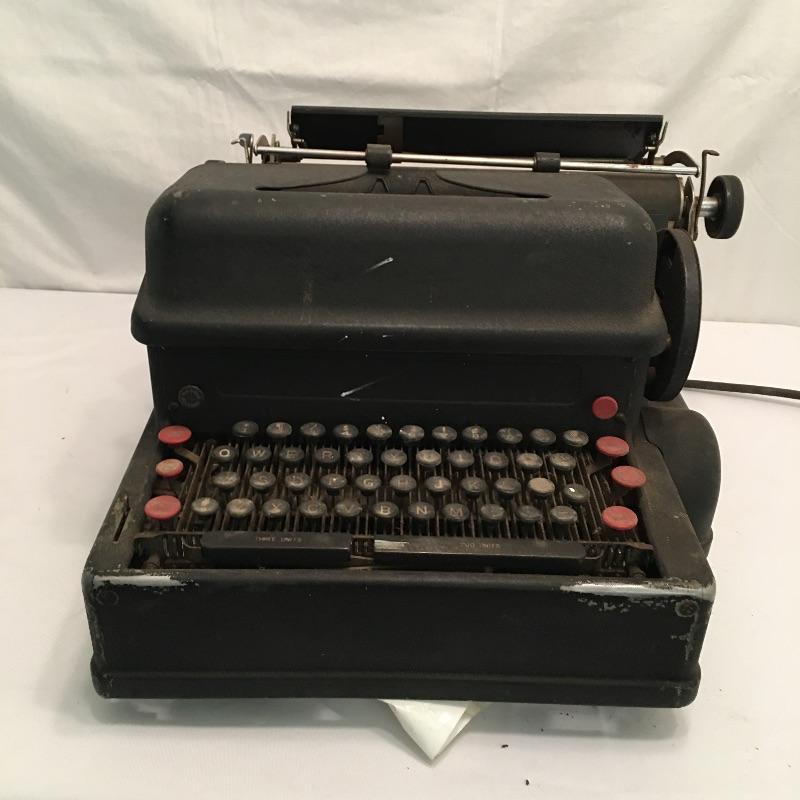

In the late 1970s, early 1980s I was developing a keyboard design (US Patent # 4,265,557) that would wrap the keys up around the typist’s fingers – the idea was to increase typing speed and accuracy, because the keys would already be touching your fingers, and when you began the motion you would ordinarily use to type a key off the ‘home row’ the key would pick up your motion with a fraction of it’s former motion. I did think about doing the micro switch concept you mentioned as well, but I didn’t really see the point after it was flipped up on edge…besides that had been done before by the zork typewriter…Īlso you can totally tell that the case for this thing is really easy to open and check for bugs…the top comes off and the whole thing hinges up clear of the bottom case…very cool design…but heavy as hell.Īlso another neat fact, the bottom case has has holes that allow access to standard 1/4 – 20 threaded holes in the inner chassis…so you can mount this thing on basically anything with $0.10 bolts… I would have put them in the case, but these cheap solenoids need gravity and an external spring to work…Also half the fun is discussing the ridiculous mechanical complexity of the original device…which doesn’t even come up in conversation unless the case is open show the thing in all it’s glory :).
#Ibm typewriter how to
His videos should be held up as models of how to present complex technical information visually.That’s precisely what I did, there are 6 levers to get a particular letter/symbol (and one to strike the letter). You may remember Bill, aka Engineer Guy, from the office copier anatomy video we hit last July. Doubly awesome is the fact that the video features an appendix (yes, a video appendix) which focuses exclusively on the whiffletree itself, closely illustrating its operation with a simple 2-bit case. Brilliant science-and-technology documentarian Bill Hammack, professor of Chemical and Biochemical Engineering at the University of Illinois, has produced this fascinating video anatomy of IBM’s classic Selectric typewriter, in which a 7-bit whiffletree is employed to convert keypresses (digital) to precisely coordinated tugs (analog) on the control cables that rotate and tilt the type ball. Heck, that’s the word of the month, as far as I’m concerned.Ī “whiffletree” is a mechanical digital-to-analog converter. Showcasing amazing maker projects of 2022

Gift the gift of Make: Magazine this holiday season! Subscribe to the premier DIY magazine todayĬommunity access, print, and digital Magazine, and more Share a cool tool or product with the community.įind a special something for the makers in your life. Skill builder, project tutorials, and more Get hands-on with kits, books, and more from the Maker Shed A project collaboration and documentation platform.Initiatives for the next generation of makers. Membership connects and supports the people and projects that shape our future and supports the learning.
#Ibm typewriter free

Microcontrollers including Arduino and Raspberry Pi, Drones and 3D Printing, and more. Maker-written books designed to inform and delight! Topics such as.A smart collection of books, magazines, electronics kits, robots, microcontrollers, tools, supplies, and moreĬurated by us, the people behind Make: and the Maker Faire.Together tech enthusiasts, crafters, educators across the globe. A celebration of the Maker Movement, a family-friendly showcase of invention and creativity that gathers.The premier publication of maker projects, skill-building tutorials, in-depth reviews, and inspirational stories,.


 0 kommentar(er)
0 kommentar(er)
